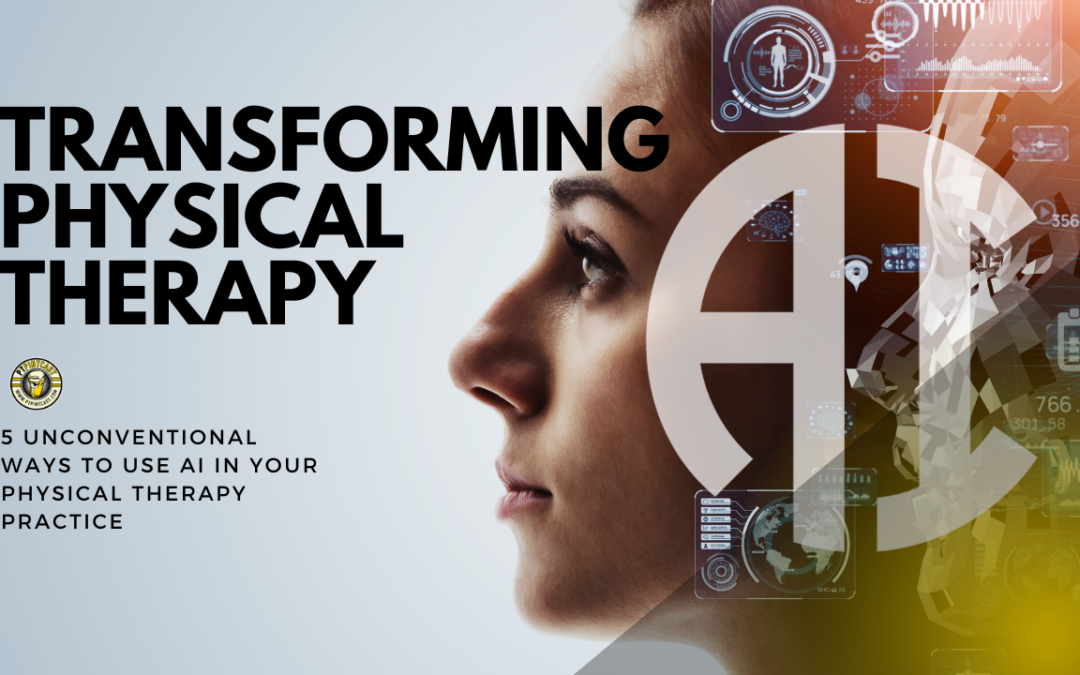How we practice physical therapy hasn’t dramatically changed in decades. Sure, techniques evolve and equipment gets fancier, but the core remains patient-centered care. However, the business side of physical therapy is a different ball game altogether. It demands a change, and what better change-maker than Artificial Intelligence (AI)? Before you imagine robots taking over your practice, let me clarify—I’m talking about ChatGPT, a text-based AI that’s nothing short of a revolution.
1. “Automate, Don’t Alienate”: Customer Service Auto-Responses
Remember the long-gone days when a patient would call, and someone had to answer—usually during a session? Automating responses isn’t about replacing human touch; it’s about optimizing it. By using ChatGPT, you can craft personalized, empathetic auto-responses for appointment queries, cancellations, and more. No longer robotic and stale, these responses can be as nuanced and compassionate as you’d like, without consuming your time. Instead of diluting the patient relationship, it enhances it.
2. “The Wisdom of Crowds…of One”: Content Generation for Blogs or Newsletters
Content is king, but not every physical therapist is a born writer. ChatGPT can help you brainstorm article ideas, outlines, or even full drafts. Want to write about ‘The Benefits of Pilates for Back Pain’? Pose it as a question to ChatGPT, and it’ll give you a structured answer that can be the backbone of your article. You’re still the expert, but now you have a tool that amplifies your expertise beyond the clinic and onto the page.
3. Predict to Perfect: Forecasting and Decision-making
The beauty of AI lies in its data-crunching ability. Pose your business questions to ChatGPT. How can I increase my patient footfall by 20% this quarter? What kind of marketing channel is likely to give me the best ROI? While it’s not a substitute for a financial advisor, ChatGPT can offer you actionable advice based on general industry practices and your input. Thus, it brings a semblance of data-driven decision-making without hiring a consultant.
4. “The Social Butterfly Effect”: Strategic Social Media Posts
The daunting question of what to post and when to post on social media can now have a new answer: Ask ChatGPT. This AI can help you plan and draft meaningful posts, from patient success stories to sharing the latest in PT news. It can even help you respond to comments or questions on your posts, making social media management less of a chore and more of a strategic move. Pairing CHATGPT with a platform like CANVA that will let you create social media visuals like graphics or videos in minutes can up your game from rookie to pro in a few days.
5. Lean Learning: Staff Onboarding and Training Resources
Staff turnover is a challenge. New hires take time to align with your practice’s ethos and standards. ChatGPT can help you design a quick FAQ or even an interactive scenario-based guide for new staff. What’s the best way to handle a patient who is unhappy with their progress? How to approach billing issues? These resources can be generated quickly, helping you reduce the onboarding time significantly.
Conclusion: The AI Advantage
AI isn’t just a fad. It’s an assistant that can help you work smarter, not harder. It’s not about replacing the human touch but extending it—ensuring that every patient feels heard, every staff member feels trained, and every decision is data-backed. In embracing AI, you’re not just adopting a new tool; you’re adopting a new way of thinking.
What if the secret to elevating your PT practice lies not just in your hands but in your keyboard? Dare to think differently.
Other Resources
While we’ve gone deep into how ChatGPT can power up your physical therapy business, it’s also worth noting that this technology has direct implications for clinical practice. Read “AI in the Exam Room: 5 Revolutionary Ways ChatGPT Can Enhance Clinical Practice in Physical Therapy”

